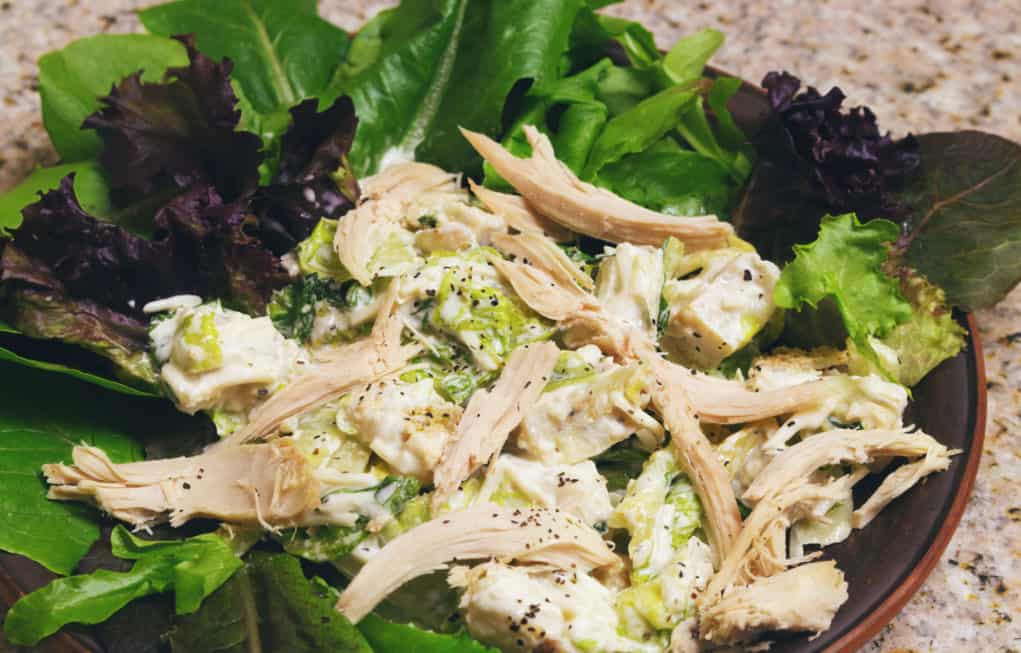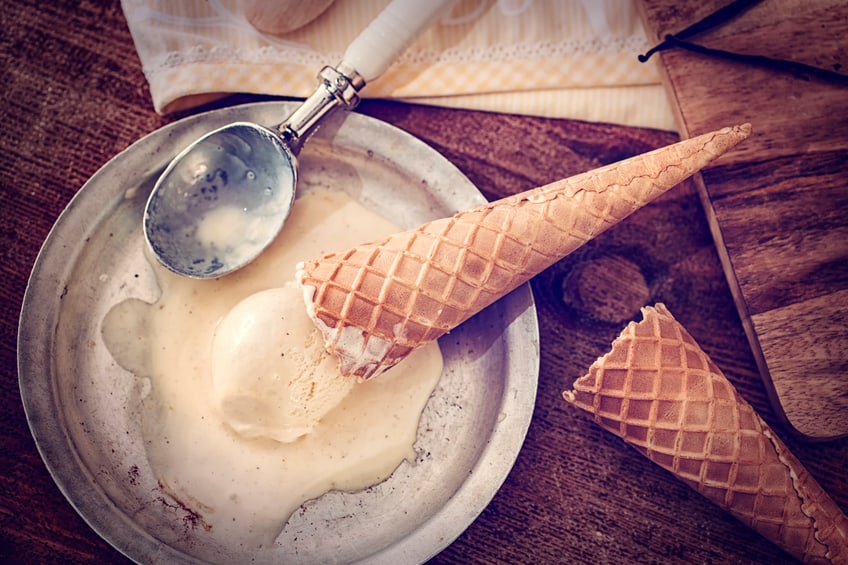An ingredient that should be prohibited from organic foods
Improving the Organic Standards
Removing Carrageenan from Organic Foods
On November 17, 2016, the National Organic Standards Board (NOSB) voted to prohibit carrageenan as an ingredient in organic foods.
However, this doesn’t mean that carrageenan will no longer be allowed in organic foods right away. The NOSB’s vote passed a recommendation to the Secretary of Agriculture to remove carrageenan from the list of substances that are exempt from the organic law’s prohibition on synthetic and non-organic ingredients.
Our advocacy work to remove carrageenan from organic foods will continue until the U.S. Department of Agriculture publishes a final rule to remove carrageenan from organic foods.

Learn More
Carrageenan
Based on our review of the scientific literature on carrageenan, we don’t think it should be allowed in foods with the “organic” label.
Non-organic ingredients like carrageenan are prohibited in organic foods unless they meet all criteria outlined in federal law. One of the criteria that non-organic ingredients have to meet is that they pose no harm to human health.
Based on our review of the scientific literature on carrageenan, we urged the National Organic Standards Board to vote to prohibit carrageenan from organic foods. Animal studies have shown that carrageenan can cause inflammation, ulcerative-colitis-like disease, intestinal lesions and ulcerations in some animals, and may act as a promoter of colon cancer.
What is carrageenan?
Carrageenan is a widely used food additive that is obtained from certain types of red seaweed. It has no nutritional value, but is used as a thickener, gelling agent, stabilizing agent or emulsifier in a variety of processed foods.
Why should carrageenan not be allowed in organic foods?
Carrageenan is derived from seaweed, which is not produced in accordance with the organic standards, and it can be processed with substances that are prohibited in organic food production. Carrageenan is therefore prohibited in organic foods; however, the organic law allows for exemptions, and carrageenan appears on the list of exempt (allowed) materials.
The organic law puts in place many safeguards. It allows for the five-year use of prohibited substances only if the use of the substance meets all criteria outlined in the law: it has to be essential, not harmful to human health or the environment, and compatible with organic production.
In the case of carrageenan, scientific studies raise serious concerns with the safety of carrageenan and its impact on human health. We believe carrageenan should therefore not be allowed in organic foods.
Why does carrageenan fail the human health criterion in the organic law?
We argued that the NOSB should use the Precautionary Principle when making its decision on whether carrageenan meets the criteria in the law. It is nearly impossible to “prove” that a material is harmful to human health, in part because human experimentation is unethical, so we rely on data from animal studies and cell studies. If scientific evidence using animal studies and cell studies strongly points to harmful effects, as is the case with carrageenan, the NOSB should err on the side of caution and protect the safety and health of consumers.
With carrageenan, a substantial body of scientific evidence exists. Research shows that the type of carrageenan used in foods can cause inflammation. Inflammation is well-known to be the basis for many human diseases, including inflammatory bowel disease, rheumatoid arthritis, and arteriosclerosis. Inflammation is also linked to cancer. Laboratory research has shown consuming carrageenan can cause ulcerative colitis-like disease and intestinal lesions and ulcerations in some animals. Additional studies in animals have shown carrageenan may act as a promoter of colon tumors.
Research, including industry-sponsored research, shows that consuming foods with carrageenan can expose consumers to degraded carrageenan (carrageenan with a lower molecular weight). This raises concerns, since degraded carrageenan is classified as a possible human carcinogen (group 2B) by the World Health Organization’s International Agency for Research on Cancer (IARC).
Recent research suggests that carrageenan may also contribute to insulin resistance and to the development of Type 2 diabetes.
Which foods can contain carrageenan?
Here is a partial list of foods that can contain carrageenan:
- ice cream
- cottage cheese
- chocolate milk
- whipped cream
- fruit jellies
- refrigerated mousse desserts
- non-fat or low-fat salad dressing
- beer (as a clarification agent)
- deli meats, including turkey, chicken and ham
- pre-cooked poultry products
- ready-to-eat infant formula
- and more…
Many organic food processors have already removed carrageenan from their products.
Taking Action
Our advocacy work to remove carrageenan from organic foods
Our written comment to the NOSB takes an in-depth look at the science behind carrageenan.
Our Fall 2016 NOSB comment
Consumers Union Comment to the NOSB, Fall 2016
REFERENCES
Inflammation and ulceration
Review study: Tobacman, J. (2001) Review of harmful gastrointestinal effects of carrageenan in animal experiments. Environmental Health Perspectives 109(10): 983-994.
Cell studies published after the Environmental Health Perspectives review:
Borthakur, A., Bhattacharyya, S., et al. (2007) Carrageenan induces interleukin-8 production through distinct Bcl10 pathway in normal human colonic epithelial cells. American Journal of Physiology, Gastrointestinal and Liver Physiology 292(3): G829-38.
Bhattacharyya, S., Dudeja, P.K. et al. (2008) Carrageenan-induced NFkappaB activation depends on distinct pathways mediated by reactive oxygen species and Hsp27 or by Bcl10. Biochimica and Biophysica Acta 1780(7-8): 973-82.
Bhattacharyya, S., Borthakur, A. et al. (2010) B-call CLL/lymphoma 10 (BCL10) is required for NF-kappaB production by both canonical and noncanonical pathways and for NF-kappaB-inducing kinase (NIK) phosphorylation. Journal of Biological Chemistry 285: 522-30.
Borthakur, A., Bhattacharyya, S. et al. (2012) Prolongation of carrageenan-induced inflammation in human colonic epithelial cells by activation of an NK-kappaB-BCL10 loop. Biochimica and Biophysica Acta 1822(8): 1300-7.
Cancer studies using food-grade carrageenan
Watanabe, K., Reddy, B.S. et al. (1978) Effect of dietary undegraded carrageenan on colon carcinogenesis in F344 rats treated with azoxymethane or methylnitrosourea. Cancer Research 38:4427-4430.
Arakawe, S. Okumua, M. et al (1986) Enhancing effect of carrageenan on the induction of rat colonic tumors by 1,2-dimethylhydrazine and its relation to B-glucuronidase activities in feces and other tissues. Journal of Nutritional Science and Vitaminology 32:481-485.
Corpet, DE, Tache, S. et al (1997) Carrageenan given as a jelly does not initiate, but promotes the growth of aberrant crypt foci in the rat colon. Cancer Letters 114:53-55.
Studies showing exposure to low molecular weight carrageenan from consuming carrageenan
Pittman, K.A., Goldberg, L. and Coulston, F. (1975) Carrageenan: the effect of molecular weight and polymer type on its uptake, excretion and degradation in animals. Fd. Cosmet. Toxicol. 14: 85-93.
Ekström L.G. and Kuivinen J (1983) Molecular weight distribution and hydrolysis behaviour of carrageenans. Carbohydrate Research 116: 89-94.
Ekström, L.G. (1985) Molecular-weight-distribution and the behaviour of kappa-carrageenan on hydrolysis. Part II. Carbohydrate Research 135: 283-289.
Capron I, Yvon M and Muller G (1996) In-vitro gastric stability of carrageenan. Food Hydrocolloids 10(2): 239-244
Uno, Y., Omoto, T. et al. (2001) Molecular weight distribution of carrageenans studied by a combined gel permeation/inductively coupled plasma (GPC/ICP) method. Food Additives and Contaminants 18(9): 763-772.
Marinalg International, “Status Report on the work of Marinalg International to measure the molecular weight distribution of carrageenan and PES in order to meet the EU specification: less than 5% below 50,000 daltons.”
Spichtig V and Austin S (2008) Determination of the low molecular weight fraction of food-grade carrageenans. J Chromatogr B Analyt Technol Biomed Life Sci 861(1):81-7.
Insulin resistance and diabetes
Bhattarachyya, S., O’Sullivan, I et al. (2012) Exposure to the common food additive carrageenan leads to glucose intolerance, insulin resistance and inhibition of insulin signalling in HepG2 cells and C57BL/6J mice. Diabetologia 55(1): 194-203.
Bhattacharyya, S., Feferman, L. et al. (2015) Exposure to Common Food Additive Carrageenan Alone Leads to Fasting Hyperglycemia and in Combination with High Fat Diet Exacerbates Glucose Intolerance and Hyperlipidemia without Effect on Weight. Journal of Diabetes Research.
